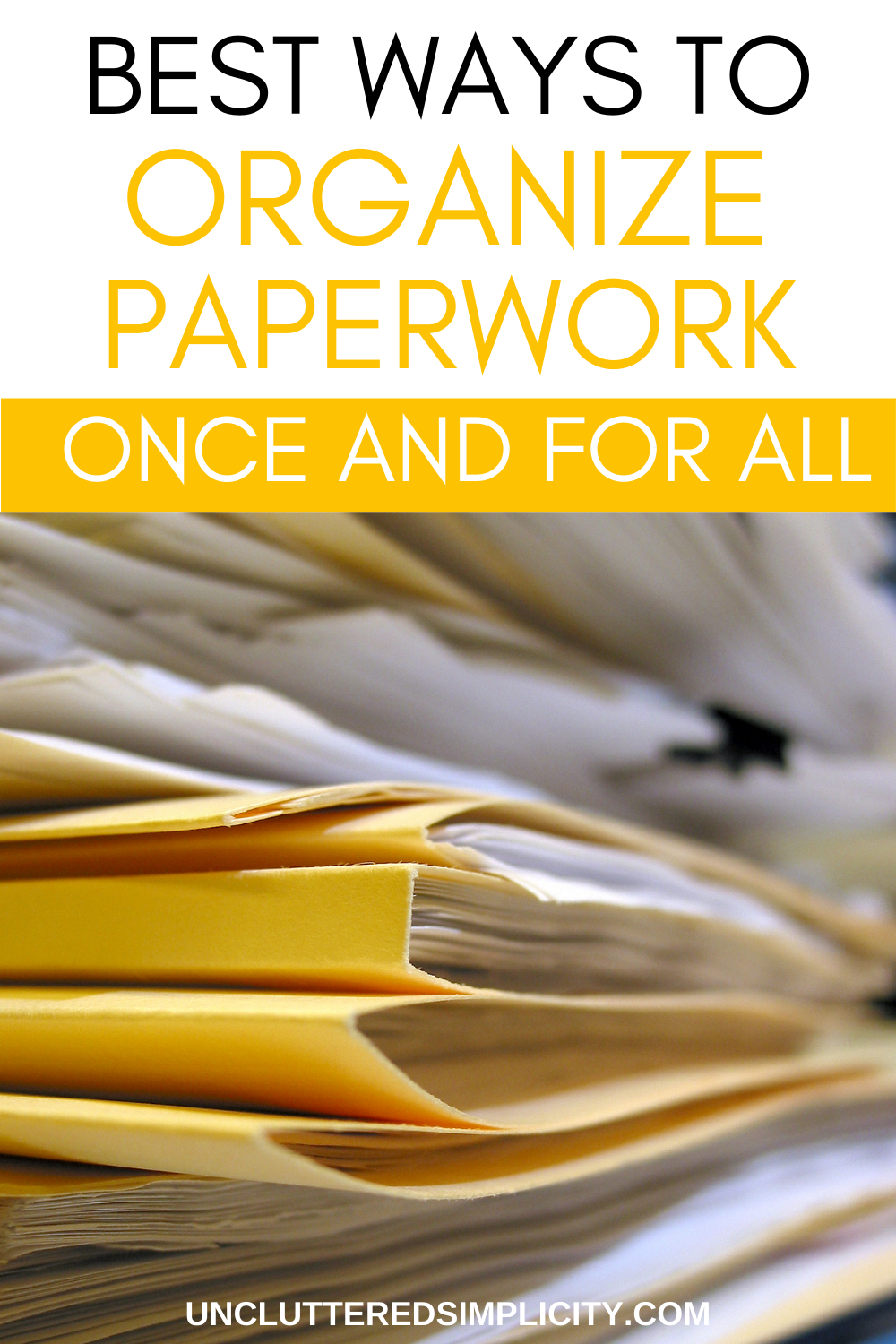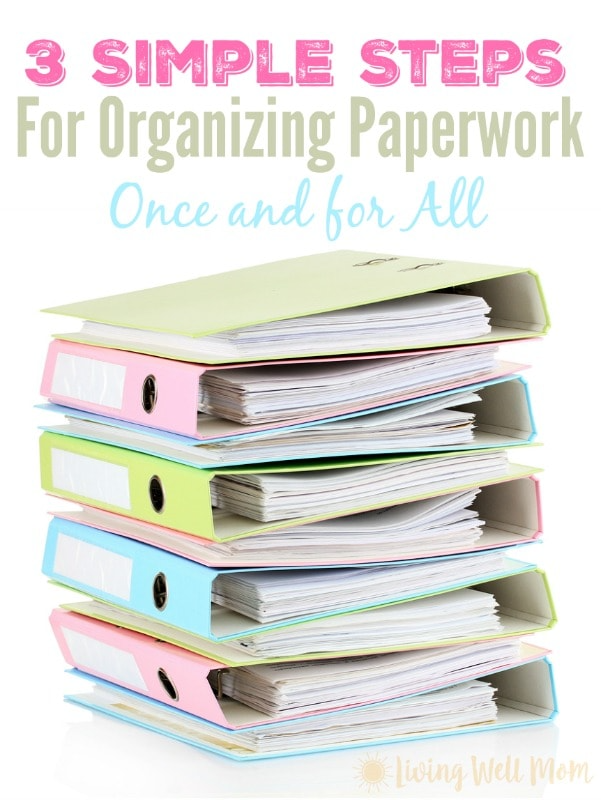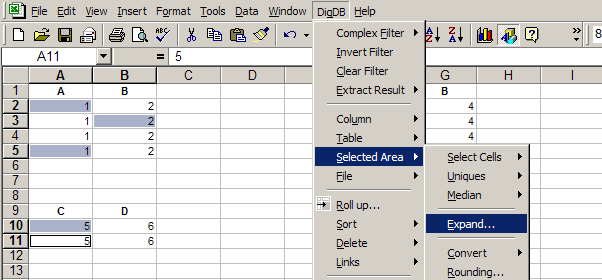Master Paperwork Organization: Simple Tips for Clutter-Free Life

Dealing with paperwork can be an overwhelming task. The clutter can lead to stress, lost documents, and a feeling of disorganization. However, with the right strategies and a bit of dedication, you can master the art of paperwork organization for a clutter-free life. In this post, we'll explore practical tips and habits that can help you organize, manage, and maintain your documents efficiently.
Understanding the Importance of Paperwork Organization

Before diving into the specifics, it’s crucial to understand why organizing paperwork is beneficial:
- Ease of Access: When documents are neatly categorized, finding what you need becomes quicker and less stressful.
- Reduced Clutter: A clutter-free environment can improve focus, reduce anxiety, and increase productivity.
- Legal and Financial Compliance: Organized paperwork ensures that important documents like taxes, licenses, and financial records are readily available when needed.
- Efficiency: Knowing where everything is means less time rummaging through papers, allowing for more time on essential tasks.
Step-by-Step Guide to Organizing Your Paperwork

1. Categorize Your Documents

The first step in any organizational effort is to sort your documents. Here’s how you can categorize them:
- Financial: Include bank statements, bills, tax documents, and receipts.
- Legal: Birth certificates, passports, property deeds, wills, etc.
- Healthcare: Insurance policies, medical records, and bills.
- Work: Job-related documents like contracts, resumes, professional licenses.
- Personal: Letters, keepsakes, travel documents, and personal projects.
📝 Note: Make sure to shred any sensitive documents before disposing of them to protect your personal information.
2. Sort and Purge

Once you’ve categorized your documents, here’s what to do next:
- Keep: Retain documents that need to be kept for legal or personal reasons.
- Shred: Dispose of documents containing personal information securely.
- Recycle: Non-sensitive items that can be safely recycled.
| Category | Keep | Shred | Recycle |
|---|---|---|---|
| Financial | Bank statements for 7 years | Credit card offers, expired financial documents | Junk mail |
| Legal | Will, birth certificate, passports | Old insurance policies | Draft or outdated legal documents |
| Healthcare | Medical records, bills | Old appointment cards | Expired prescriptions |

3. Set Up an Filing System

Choose a system that fits your needs:
- File Cabinets: Good for large volumes of documents.
- Binders and Folders: Ideal for smaller collections or frequently accessed documents.
- Boxes or Totes: Useful for less frequently needed items but still organized.
4. Digitize Where Possible

Technology offers numerous solutions:
- Use a scanner or your smartphone camera to digitize documents.
- Cloud storage services like Dropbox or Google Drive can help store these documents safely.
- Consider using document management apps like Evernote or Microsoft OneNote for organization.
📚 Note: Always back up digital documents in multiple locations to prevent data loss.
5. Implement a Regular Review Routine

To keep your organization system running smoothly:
- Schedule time each week to review incoming mail and documents.
- Set reminders for document shredding or recycling.
- Create a calendar for reviewing documents annually, especially financial and legal ones.
Maintaining Your Organized Space

Organizing paperwork is just the beginning. Here are tips for maintenance:
- Stay Proactive: Tackle paper clutter daily to prevent it from piling up.
- Use Technology: Automate bills and financial statements where possible to reduce physical paper accumulation.
- Review Regularly: Ensure that documents are still necessary and dispose of outdated or unnecessary ones.
In summary, mastering the art of paperwork organization involves recognizing the benefits of being organized, categorizing documents, setting up an efficient filing system, and employing technology for digitization. By following these steps and maintaining a regular review routine, you can keep your life clutter-free, ensuring you always know where to find critical documents when needed.
How often should I review my documents?

+
Set a weekly schedule to review incoming documents and perhaps a monthly or quarterly review to sort and purge unnecessary papers. An annual review is advisable for critical financial and legal documents.
What’s the best way to digitize documents?

+
Invest in a good quality scanner or use your smartphone camera with scanning apps like CamScanner or Adobe Scan. Store these digitized documents in secure cloud storage services for easy access and backup.
How can I ensure my personal information is secure when organizing paperwork?

+
Use shredders for sensitive documents. If digitizing, ensure your cloud storage has strong encryption and two-factor authentication. Keep physical documents locked in a secure cabinet.



